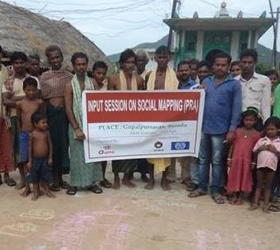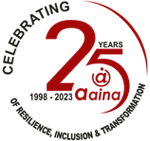aaina has taken an initiative with SEWA and ILO to identify the situation of women domestic workers in 50 villages of Bhanjanagar and Surada and work with different line department for their access to different schemes and entitlements along with safe migration.
To have a strong foothold, aaina has taken due initiatives to involve community and local stakeholders in the process. At the launching of the project workshop 75 participants from the coverage areas and women SHG along with AWW, PRI, Media people, and representatives from different NGOs , participated. Safe Migration was discussed as a major concern as women are unaware of their labor rights. Domestic labor were even more vulnerable as they fall in the category of unorganized labor and thus excluded from the scope of labor legislation. Incidences of domestic labor exploitation as such increase manifold.
The launching was an opportunity of hand holding with the community and local authorities to work in an organized way towards creating awareness about the rights of women, different schemes and safe migration. At the launch women were encouraged to participate in workers' organizations for a greater collective voice in demanding their rights, access to better paying jobs and greater opportunity for skills development. District administrator present accepted the request of supporting the process. Information on block level forum was shared that will function as a monitoring unit and for coordinating livelihood activities for local development. BDO willingly gave consent for the forum and present officials agreed to be active members of and provide their guidance.
Where launching helped in establishing coordinated efforts towards the goal, "Participatory Rural Appraisal" conducted in 2 villages further increased community awareness and participation. Participatory Rural Appraisal had an objective of involving community members themselves to think over the status of women and identify families vulnerable to migration. After establishing good rapport with villagers through detailed discussions explaining them about the objective, villagers present were guided to conduct social mapping to identify families vulnerable to migration. Villagers were guided throughout and were able to collect relevant data in the end about the vulnerable families in relation to their current occupation and other related aspects. The participatory response of the community was well where they even shared why they thought identified families were more vulnerable and also discussed the available schemes and facilities for the identified population.
aaina gears up with community to create awareness on women's labor rights and safe migration



